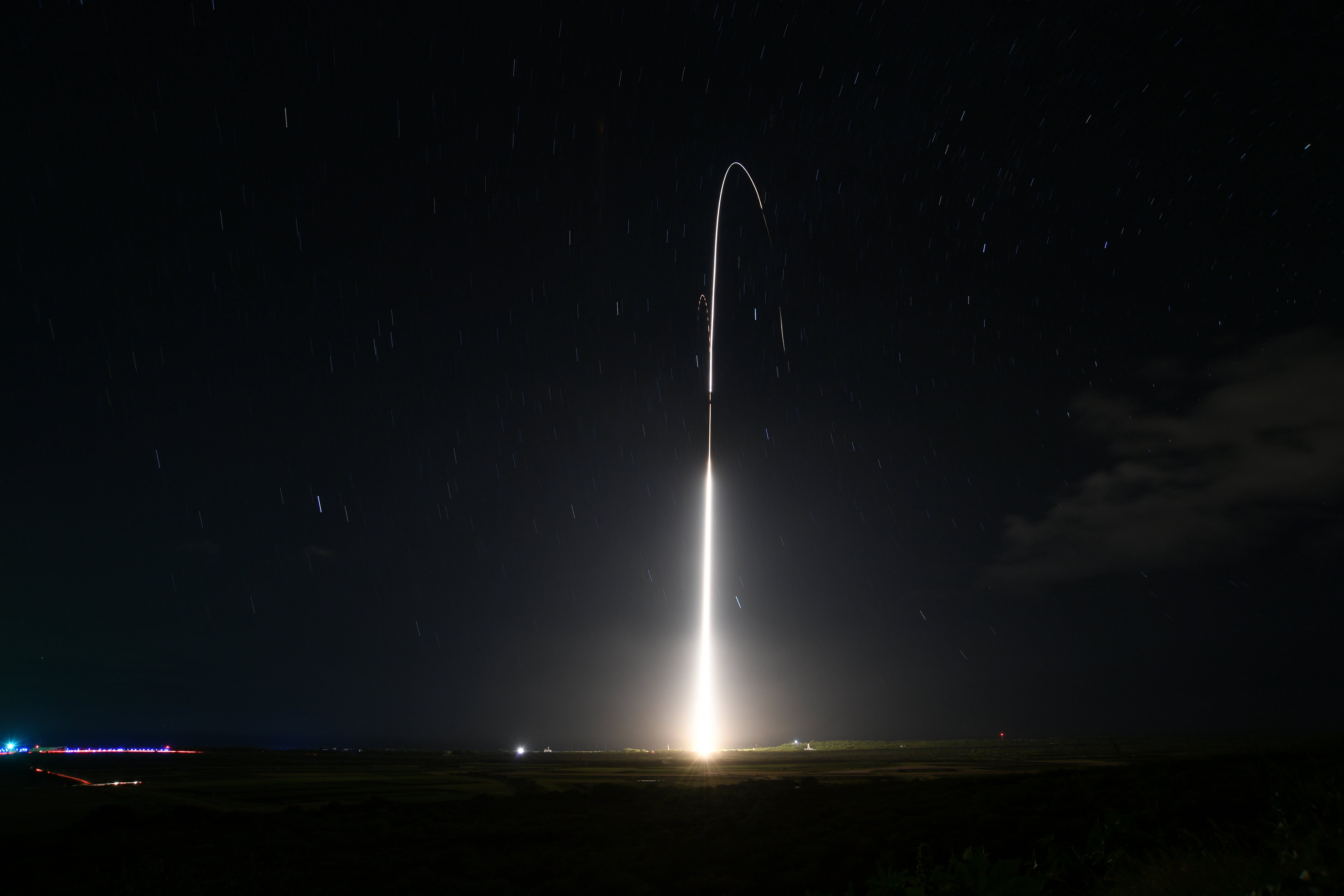WASHINGTON — The Missile Defense Agency’s fiscal year 2021 $9.2 billion budget request shows a refocus on developing and deploying a layered homeland ballistic missile defense system. The focus: operational regional missile defense capability to underlay the current Ground-Based Midcourse Defense System designed to protect the continental United States, following the abrupt cancellation of an effort to upgrade the system’s interceptors.
The MDA is funding a Next-Generation Interceptor instead of pursuing the now-canceled Redesigned Kill Vehicle (RKV) program, which would have upgraded GMD’s current GBIs with a more capable kill vehicle than is currently deployed at Fort Greely, Alaska, and Vandenberg Air Force Base in California.
But the agency is also going to take regional missile defense capability already resident within the Navy and Army and use it to provide a layered defense against intercontinental ballistic missile threats to the United States homeland.
The FY21 budget “supports reprioritizing funds to improve homeland defense,” Michelle Atkinson, the MDA’s director for operations, told reporters at the Pentagon during a Feb. 10 briefing on the FY21 budget request. In addition to its request of $664.1 million in FY21 for NGI, the agency is also “adapting regional systems such as Aegis and [the Terminal High Altitude Area Defense System] THAAD to provide a layered homeland defense."
According to supporting budget request documents, the agency plans to add these layers of defensive capability to its architecture and is taking steps to assess the Aegis Weapon System to determine if it can be upgraded to bolster homeland defense against ICBM threats, particularly the SM-3 Block IIA missiles used in the system. The MDA wants to spent $39.2 million in FY21 looking into this possibility.
Additionally, the agency would like to spend $56.6 million in FY21 to modernize the Aegis system and test the feasibility of operationalizing the Aegis Ashore Defense Test Complex in Hawaii. Funding also includes adding SM-3 to the Aegis Ashore arsenal to provide “an exo-atmospheric defense against short- to intermediate-range ballistic missile threats in the later stages of flight,” the budget documents describe. The Romania Aegis Ashore site has already been upgraded with the missile.
MDA is also requesting $273.6 million for THAAD development efforts to include funding for a THAAD homeland defense tier. Specifically, the agency is asking for $139 million in FY21 to start the development and demonstration of a new interceptor prototype for THAAD, which could support a tiered and layered approach to homeland defense.
“This effort will develop prototype software and hardware and perform a series of demonstrations to prove the technologies to enable expansion of engagement options and coverage areas for the THAAD weapon system in a flight test in FY23,” the budget documents state.
RELATED

MDA Director Vice Adm. Jon Hill said while the agency is confident in its existing fleet and homeland defense capability, it is also aware that threats will evolve.
“We know some time in the mid to late ’20s, you will start to see a fall-off in the ability of [the GBI] missile to take on those threats. You will start to see reliability issues, kind of normal for any weapons system that is deployed for that long,” he said, noting the first GBI went into the ground in 2004.
The agency does not plan to buy any more GBIs even though President Trump pushed for and Congress approved the purchase of 20 additional interceptors and a new silo to house them.
"When we prove that we can take out an ICBM with an Aegis ship or an Aegis Ashore site with an SM-3 Block IIA, then you want to ramp up the evolution of the threat on the target side and go against more complex threats,” Hill said.
The Pentagon will also have to make sure it can upgrade the combat system that is on a ship to take in engage-on-remote data from other sensors and can control the missile, Hill said.
The whole point of layered defense is to give combatant commanders options, so in addition to firing a GBI against a target — or the future NGI — there will be an option to fire an SM-3 Block IIA or even a THAAD interceptor, Hill described.
The agency is “challenging ourselves” to figure out how to develop a THAAD interceptor that would work against an ICBM, he said. To do that, the MDA is seeking to draw from building THAAD batteries for Saudi Arabia to study what might be needed, according to Hill.
And the agency is also looking at the engineering trade space today.
“We may consider an upgraded propulsion stack to give [THAAD] extended range, don’t know yet,” he said. “It could be that we don’t want to update the propulsion. Maybe there is something in the seeker that would buy us more in the trade space now.”
The THAAD interceptor program is a new start in the FY21 budget request, Hill noted. “We are working our way through what that program would look like.”
Meanwhile, the agency plans to release its request for proposals to industry for its NGI program by the end of the month, Hill said. MDA plans to make an award by the end of the calendar year, he added, but overall its procurement schedule isn’t refined.
While the agency anticipates testing of the NGI in the mid 2020s, and placing them in the ground roughly in 2027 or 2028, industry proposals will dictate final schedules and what is doable.
MDA is funding the NGI program at $4.9 billion across the five-year budget plan, which does not include procurement dollars, according to Atkinson.
Jen Judson is an award-winning journalist covering land warfare for Defense News. She has also worked for Politico and Inside Defense. She holds a Master of Science degree in journalism from Boston University and a Bachelor of Arts degree from Kenyon College.








